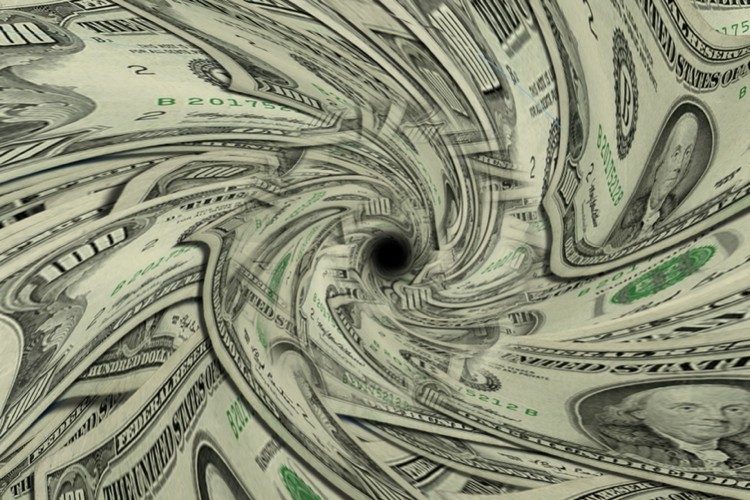
Has the U.S. dollar entered a death spiral? A growing number of prominent observers seem to think so. The U.S. national debt, now at more than $34 trillion, is now growing at a breakneck pace, adding an additional $1 trillion every 100 days or so. This prompted Moody’s Investors Service, one of the world’s three premier credit-rating agencies, to downgrade U.S. government creditworthiness last November from “stable” to “negative.” At the time, Moody’s wrote, “In the context of higher interest rates, without effective fiscal policy measures to reduce government spending or increase revenues, Moody’s expects that the US’ fiscal deficits will remain very large, significantly weakening debt affordability.” This means that, as the U.S. debt continues to balloon out of control, would-be creditors will not be enticed into purchasing more U.S. debt unless interest rates are jacked up.
And that was four months ago. This week, Michael Hartnett, chief strategist at Bank of America, added his voice to the chorus of concern. “The U.S. national debt is rising by $1 trillion every 100 days,” Hartnett wrote in a note to clients. He added that it’s “little wonder ‘debt debasement’ trades closing in on all-time highs, i.e. gold [at] $2077/oz [and] bitcoin [at] $67,734.” And he predicted that the collapse of the U.S. dollar could cause the new bitcoin-denominated exchange-traded funds or ETFs to have a “blowout year,” as investors seek refuge in the comparative security of cryptocurrencies. It’s worth noting that newly-created ETFs, such as BlackRock’s IBIT and Fidelity’s FBTC, are already worth billions of dollars and have experienced massive inflows of new cash over the last two weeks. While some have suggested that cryptocurrencies may replace gold as the world’s new vehicle for storage of wealth, gold also has soared to dizzying new heights, at around $2,084 an ounce.
All of these are signs that the U.S. dollar may be entering a terminal inflationary phase which will lead ultimately to the financial collapse of the United States and much of the rest of the world. Last month, Nassim Taleb, author of The Black Swan, wrote that the U.S. economy is now trapped in a “death spiral…. As long as you have Congress keep extending the debt limit and doing deals because they’re afraid of the consequences of doing the right thing, that’s the political structure of the political system, eventually you’re going to have a debt spiral. And a debt spiral is like a death spiral.” And Wharton Business School finance professor João Gomes told Fortune magazine that the fun could start as soon as next year: “It could derail the next administration, frankly,” Gomes said. “If they come up with plans for large tax cuts or another big fiscal stimulus, the markets could rebel, interest rates could just spike right there, and we would have a crisis in 2025. It could very well happen. I’m very confident by the end of the decade one way or another, we will be there.”
All of this, of course, assumes that Congress will fail to muster the courage to actually make deep cuts in the size of government, opting instead for cosmetic tax cuts and stimulus packages, false remedies that will only exacerbate the underlying problem, i.e., our government is too large and too expensive, and its uncontrolled growth threatens to destroy the dollar and bankrupt the country.



